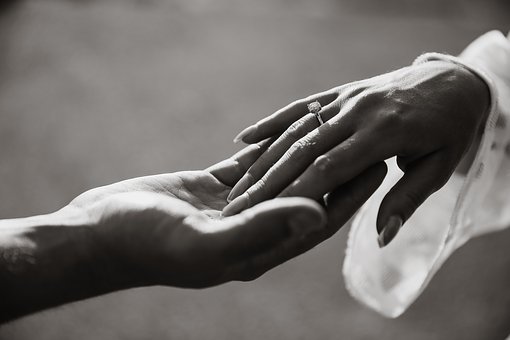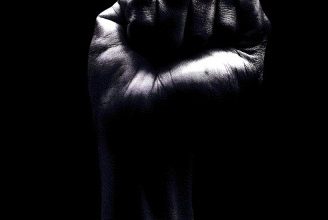
A woman speaking for many women, Margaret Atwood’s thought-provoking penmanship is a subject of interest to many of her readers and literary critics who often attempt to dissect meaning between the lines from the plethora of rich allusions and images as in the case of her 1994 speech “Spotty-Handed Villainesses” delivered on several literary occasions. The key premise of her speech is to challenge the then popularly held belief about feminism’s unsupportive stand towards the portrayal of women in literature on the other end of the morality and character spectrum. She articulates her view by drawing on various instances from literary texts that have created bad women in order to prove a point. Such characters definitely serve as facilitation in understanding human behavior in its different facets and thus Atwood ventures to justify the same.
Spotty-Handed Villainesses | Summary
Atwood begins her speech by delineating the title and subtitle of her long oratory piece, a thought that flowers right from her childhood during a reading of one of the children’s rhymes. Rhymes and fairy tales usually hold morality to their core but she expounds that they also evoke the “Angel/Whore” split which is incomprehensible for children like her at the age of five. The presence of social issues infiltrates the innocence of children’s poems. She further dispels all interpretations of her title, sticking to its allusion to Shakespeare’s Lady Macbeth and her “invisible” spot- the guilt and damned status. An inspection of the need for bad women in literature consumes the rest of her speech. Literature needs “something else to happen” which is not a day-to-day spectacle. A character in a novel is someone a reader would not like to participate on a personal or professional level in real life which opens a blank space for a fiction writer to ink on with unimaginable yet possible traits.
Atwood moves ahead with an extensive approach toward defining what novels are not- “it is not a political tract, a how-to book, a sociology textbook or a pattern of correct morality…[and] not merely a piece of Art for Art’s Sake, divorced from real life.” She also voices a novelist’s similarity with God and difference against literary critics. After an enriching detailing about novels, she jumps into different genres such as Sci-fi, Gothic, Supernatural and Detective writing to decipher various exciting elements that render the women characters of texts under them unconventional. The great role of movements in history advocating women’s rights holds centrality to works today that flout the distinction of writeable from the non-writeable. This leads to the pre-feminist and post-feminist notions of women, the latter offering more choices. Literature’s dependency on bad behaviour calls to the conventional choice of a male character as the repository of evil. Even a woman too can shine in a negative light because she is after all a human too susceptible to change and multidimensionality. The characterization of various bad literary heroines opens a new avenue for interpretations. The speech concludes with Atwood’s emphasis on the necessity of evil women in “story traditions for two… more obvious reasons…First, they exist in life, so why shouldn’t they exist in the literature? Second – which may be another way of saying the same thing – women have more to them than virtue. They are fully dimensional human beings.”
Spotty-Handed Villainesses | Analysis
Margaret Atwood’s speech begins with ellipses to reflect on its nature as “in media res.” She continues her already being delivered speech by setting out to the portrayal of women as bad or evil in literature and the problems it has attracted and continues to do so. She titles her speech “Spotty-Handed Villainesses”- inventing the female counterpart of villains. There is an allusion to Shakespeare’s Lady Macbeth from his most celebrated play Macbeth as an embodiment of wickedness and villainy a woman can ever harbour. Atwood examines feminism’s position on the construction of evil women in literature which adopts an unfeminine attitude when it comes to treating a woman badly in literature.
Through her rhetorical language which is persuasive, convincing and challenging, she creates a case for the need for such women. She initiates it by referring to episodes from her life along with abundant literary characters to paint her speech with a rich texture. One of the key tricks she employs to make a compelling argument is to avoid directly jumping into the problem. Instead, she builds a back story using the history of novelization and the workings of a novel while also comparing and distinguishing the jobs of novelists and literary critics. To advance her proposition, she creates the necessity in a novel that should serve something other than a “breakfast.” Interestingly, being a woman, she critiques the previous waves of feminism which somehow do not allow a full exploration and exploitation of a woman’s capabilities and power. There is much more to their representation on the pleasing end of the moral spectrum. Like any man, they too are humans and thus multidimensional. They are vulnerable to changes surrounding them with a defining mark on their level of tolerance.
Literature does not need to only create women characters who are role models only in the ethically viable sense. In reality, there are women who are selfish, rude, greedy, sexually liberated, and powerful owners of big companies ready to kill their competition and the list is endless. If the role of literature is to mirror society, then it should not shy away from presenting it in all its facets. Atwood adopts a more persuasive tone than a discursive one to reach her end. By combining statistical data with literary instances, she successfully furthers her cause about an equal representation of women in literature in both their moral goodness and viciousness.
Spotty-Handed Villainesses | Literary Devices
Simile
The task of novelists to choose the best part in their stories is “like wrestling a greased pig in the dark.”
Lucy Tantamount is a character from Point Counter Point who is “a force. You may not like that kind of force. But you can’t help admiring the force in itself. It’s like Niagara.’”
Allusion/Intertextuality
Atwood employs a substantial list of references to affirm her position-
- Jane Austen’s Pride and Prejudice and its motive lacks strict restriction to only the purpose of conducting women.
- Henry James’ The Turn of the Screw and Bram Stoker’s Dracula possessing “hidden agendas” and revolving “around notions of female sexuality.”
- Shakespeare’s sonnets in the Dark Lady sequence- “When Shakespeare wrote his sonnets to his dark-haired mistress, he wasn’t saying that blondes were ugly, he was merely pushing against the notion that only blondes were beautiful.”
- The Perils of Pauline and its take on suffering as an assuring morality check of goodness.
- Jezebel, the wife of the King of Israel in the Hebrew Bible who tries to please a “sulky husband” and as an act of wifely devotion kills Naboth.
- Medea, from the Greek tragic play of the same name by Euripides who commits infanticide to prevent child abuse.
- Medusa, from Greek mythology who turned anyone to stone if they gazed into her eyes
- Delilah, a woman from Hebrew Bible, famous for having betrayed Samson.
- Regan and Goneril, the daughters of Lear from Shakespeare’s play King Lear who were against patriarchy.
- Lady Macbeth, the wicked wife from Shakespeare’s play Macbeth who accelerated her husband’s position.
- “Rider Haggard’s powerful femme fatale in She.”“Tony Morrison’s mean Sula from the novel by the same name and Beloved‘s Sethe who kills her own child.
- Queen of the Night, from Mozart’s Magic Flute.
- Hardy’s Tess of the D’Urbervilles kills “her nasty lover due to sexual complications.”
- Snow White and the Seven Dwarfs has untold possibilities when “the evil queen drinks the magic potion and changes her shape.”
- Grimm’s Fairy Tales
- Nathaniel Hawthorne’s Hester Prynne from The Scarlet Letter, “who becomes a kind of sex-saint through suffering.”
- Gustave Flaubert’s Madame Bovary, “who not only indulged her romantic temperament and voluptuous sensual appetites but spent too much of her husband’s money doing it, which was her downfall.”
- Becky Sharpe from William Thackeray’s Vanity Fair who “makes no pretensions to goodness. She is wicked, she enjoys being wicked, and she does it out of vanity and for her own profit, tricking and deluding English society in the process – which, the author implies, deserves to be tricked and deluded, since it is hypocritical and selfish to the core.
- “Undine Spragg in Edith Wharton’s The Custom of the Country is an adventuress; she lives by her wits and uses men as ambulatory bank accounts.”
- Thomas Mann’s Felix Krull,
- Novels like Jane Eyre which posses oppressive aunts, nasty female teachers, depraved governesses, and evil grannies.
- Jacques Offenbach’s opera “ The Tales of Hoffman”
- Aldous Huxley’s novel Point Counter Point has a woman Lucy Tantamount who is “the man-destroying vamp.”
- The speech closes in Dame Rebecca West’s words from 1912 – “‘Ladies of Great Britain … we have not enough evil in us.’”
- Carl Jung’s notion of double life through the example of Dr. Jekyll–Mr. Hyde
- The title alludes to Lady Macbeth’s character from Shakespeare’s play and her spots of guilt.
- Ibsen’s domestic plays through her daughter’s skit with her friend.
- Harold Pinter, Eugene Ionesco, and Andy Warhol for the absurdity of breakfast routine
- Shakespeare’s Iago from Othello and Imogen from Cymbeline
- “Women’s movement”- the different waves of feminism influencing how women are read today.
- “A female character could rebel against social strictures without then having to throw herself in front of a train” like Leo Tolstoy’s Anna Karenina.
- Seven deadly sins in the Christian Bible.
Irony
A novelist’s attempt to create “a flawless character” also results in the creation of an equally “insufferable one.”
French author Andre Gide’s remark “‘It is with noble sentiments that bad literature gets written’” exposes the efforts behind such works.
Humour
A critic works as if “in the mode of the policeman making the arrest, ‘Aha! You can’t get away with that!’”
The looming sword of controversy and publicity a writer tries to avoid “unless the novelist has a secret desire to be in billboard advertising.”
Satire
Atwood shares her experience about women often asking her “‘why don’t you make the men stronger?’” Her reply takes a dig at such a notion where she suggests taking this matter up with God as “it was not, after all, I who created Adam so subject to the temptation that he sacrificed eternal life for an apple; which leads me to believe that God – who is, among other things, an author – is just as enamoured of character flaws and dire plots as we human writers are.”
Metaphor
The novel’s “roots are in the mud” suggesting its conception and inspiration from real life despite the extremity of the plot, setting and characters. It is also perceived as “bank robbery” where an author doubts his/her capabilities in pulling it off.
Juxtaposition
Atwood’s belief that “by indirection, we find direction out” is artistic at its best as it conjoins two opposite forces.
Anecdote
Atwood recounts a play by her daughter and her friend Heather that involves only scenes of breakfasts to strengthen her argument concerning the avoidance of monotony and normalcy in literature to in turn establish a difference from real life.
Hypophora
Atwood puts forward a question- “When bad women get into literature, what are they doing there, and are they permissible, and what, if anything, do we need them for?” In the next line, she ventures to answer it herself- “We do need something like them; by which I mean, something disruptive to static order…”
Idiom
Atwood asserts that her speech is not about “flogging a few dead horses.”



